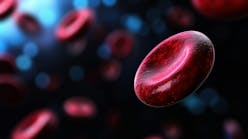In 2010, Brandy Gallaher, MSM, MT(ASCP), SBB, was asked to head up efforts to bring automation into the blood bank laboratory at Lynchburg General Hospital in Virginia. Part of the Centra Health System, Lynchburg General Hospital tests more than 1,000 samples per month. That volume consists of the usual ABO/Rh typing and antibody screening for patients at the 358-bed facility, but it also includes some prenatal and pre-surgery tests for patients at other hospitals in the five-hospital regional chain.
Hospital administrators knew that standardizing test techniques and results interpretation enhances patient safety by reducing human error, and that automation is less labor-intensive than manual tube tests and might help them save on personnel costs. But Gallaher, the blood bank manager, had one other motivation: an automated device is easier to teach than manual tube testing. “All of our blood bank staff are generalists, so standardization was one of my main reasons for wanting automation,” Gallaher says. “We needed something that was easy to learn and operate.”
Today, three years after an automated instrument was integrated into her lab, Ms. Gallaher has seen a significant improvement in workflow and efficiency. “It was an unwritten rule that we would allow staff to test four samples at a time using tube methodology,” she says. “But some staff members only feel comfortable doing one or two samples at a time, so the efficiency wasn't there. We are now batching our samples for routine antibody screens on the automated system. This gives our staff time to concentrate on more difficult patient workups, answer phone calls, or work on component preparation.” Her staff is also able to handle more specialized requests, such as STAT types and screens, and perform some cross-matching work manually on the bench.
And while the system was not purchased to replace personnel, the lab finds that most times it can make do with two staff members and a floater across departments, rather than the three FTEs who used to be scheduled for the blood bank alone.
Lynchburg General Hospital's experience is being replicated at hundreds of hospital laboratories that have opted to automate their blood banks and other benches of their labs. Automation promotes better safety and workflow than tube testing, and the results are more reproducible. Large-sample data are hard to find on how much automation can increase efficiency and reduce turnaround time. But automation can also bring some economies of scale, and with a high turnover and shrinking pool of staff, it enables hospitals to standardize and simplify both technique and training.
Automation methodologies
Labs have two basic automation methodologies to choose from: solid-phase red cell adherence, commonly known as solid phase; and column agglutination using a gel matrix, commonly known as gel automation. (Another methodology, called erythrocyte magnetized technique, is used to a far lesser degree.) In the solid phase method, a solid coating of Protein A or RBC stroma is placed in a microplate well for the antigen-antibody reaction, and anti-sera is placed in a well for ABO grouping. Gel methodology consists of plastic cards with six to eight integrated microarray “columns”—basically, reaction chambers over a gel matrix—where agglutinates are trapped.
The reasons a lab might choose one methodology over another are numerous. Different manufacturers claim different sensitivities and specificities between methodologies and even within the same methodology. Some platforms contain innovations that enhance safety. One system might have easier-to-understand software; another device might be easier to service. Often, a lab will lean toward one platform simply because the vendor is already supplying reagents.
Training and operations
When introducing any new system, the typical lab supervisor may receive a certain amount of initial skepticism, and even resistance from some staff. If a lab is going from manual tube testing to automation, veteran staffers may harbor fears that they are “being replaced by robots.” Some may even conclude after a short time that the old system—whether tube or automated—was more efficient. These reactions are normal, and they can be overcome with proper training.
Solid phase and gel systems create and interpret antibody-antigen reactions differently, but from an operational standpoint, they are somewhat similar. Someone must load samples and microplates, bottles or cards of reagents. Someone must perform QC and maintenance tasks on a daily or weekly basis. And of course, someone must start a run and validate both the reaction and interpretation. Thus, training on one automation methodology will be, in many ways, similar to another.
Testing a gel-based instrument
The University Hospital of Bern in Switzerland is one of the oldest and largest healthcare facilities in Europe. Known as Inselspital Bern, it provides care for more than 250,000 patients annually. Inselspital Bern specializes in cardiology, neurology, and transplantation of solid organs and hematopoietic stem cells. For the last seven years, Marco Vogt has served as its chief biomedical scientist and led its transfusion medicine lab. With a staff of 18, the lab is responsible for all the diagnostic screening and typing at the hospital, handling a volume of 120 to 150 samples per day. It also serves as a reference lab for 18 hospitals and private labs and a few local hematologists.
When Vogt joined the hospital, the lab was already using automation, so it seemed like a good setting to field test a new version of a gel-based device for a manufacturer in nearby Cressier. Vogt, who holds a master's degree in Transfusion and Transplantation Sciences, put the system through various screening and typing scenarios, including STAT antibody screening. For the latter, he wanted to learn how successive STAT samples could be loaded, tested, and analyzed without interfering with each other, which could affect accuracy or delay results. To achieve that objective, he had to learn how to coordinate incubation times of STAT samples placed on the device's emergency racks to most efficiently use its three centrifuges.
Field testing took a little bit more than a month and influenced some aspects of the development of the device. The hospital ended up purchasing two of them, one installed in October 2010 and the other in August 2011.
Breaking the routine
Training lab personnel on the first device took the better part of a week. Vogt elected to have two training levels, one for the supervisors/super users and one for biomedical scientists (BMS), i.e., staff. A vendor representative provided a handout and trained the first group over three days. After summarizing their experiences and materials and writing SOPs, this group then trained all the other BMSs on staff.
“The new system was really simple, but it was different, and these people had their routine,” Vogt says. “But with one-on-one training you can break the routine by allowing the biomedical scientists to use and learn the device with a trainer sitting right next to them.”
Today, the two platforms are the workhorses of his lab. Though the devices were expensive and STAT samples could always be done faster manually, those tradeoffs pale before the enhanced patient safety and return on investment that automation brings, Vogt says. Automation “quickly provides a huge amount of analysis within a short time period, and the method is very standardized and traceable. It almost completely rules out handling and typing errors when results are uploaded into the laboratory information system, and the bidirectional data transfer is invaluable. You don't need that many staff to operate and maintain it, so you can use them for other things, such as new or specialized analysis.”
Switching to another platform
Some hospitals try automation with one instrument but then move to another device as technology improves operation, sensitivity, or safety. Dianne Tanouye, MT(ASCP) SBB, is blood bank supervisor with Good Samaritan Hospital in Los Angeles, an academic medical center affiliated with the USC and UCLA Schools of Medicine. “Good Sam,” as it is known in the community, treats about 17,000 patients annually.
After the lab's original automated test device was subject to a Food and Drug Administration recall, it was mothballed and “no one in the blood bank knew enough or wanted to get it going again,” Tanouye says. Meanwhile, the current lab supervisor left to work in another institution, and the hospital upgraded its computer system. When Tanouye came on board, the medical director, who was partial to solid phase, asked her to help select a new device. She and her colleagues ended up choosing a system because it had a state-of-the-art operating system and “was very user-friendly, very walk-away.”
The vendor sent a technical specialist to the site to help train the staff in two-hour sessions. After installation, “it took a while to get the interface going,” and then there was the normal validation period to see how the instrument handled a variety of test scenarios and bugs, such as an insufficient specimen volume or clotting.
When the device was first introduced, she says, “A lot of the old-timers were thinking 'As soon as they get this going we're going to lose our jobs.' And even though we assured them that our intent was not to reduce staff, they were leery of automation. But once they got accustomed to it they realized that the instrument was running their type and screens while they're getting five phone calls. It just came down to trusting the instrument and seeing how it could free them. Now they are so used to the [device] that when it's down because of PM maintenance or some part has worn out, they find it a burden to do all the testing manually and are not happy. It's become part of the day-to-day.”
Going live, and how it's going
The Good Sam lab went live with the new platform in September 2010. Today, the 450-specimen-a-month lab uses the device for ABH/Rh typing and antibody screening/ID, and has plans to do direct antiglobulin testing and weak D testing in the future. All ABO units and those that type Rh negative used to be retyped manually, which would bog down workflow, but that task has been automated as well. The lab still uses manual and semi-automated tube testing for confirmatory tests and difficult workups. For instance, when a weak reaction occurs during automated typing, the staff will confirm it with a manual tube test. Tanouye praises the sensitivity of the device, saying that even if a specimen is hemolyzed, “it can read through that and give us a good ABO/Rh type.”
During her tenure at “Good Sam,” the number of staff has about halved, so Tanouye helps out as needed. Normally, in the morning a staff member will get the device ready, perform QC tasks, and load reagents, while another one might prepare for AM surgeries. “It's not a set schedule,” she says. “Somebody will say, 'Do you want to start up the [device] today?' And then the other person will do the work. There's phone calls that come in. There's inventory to be taken of blood. If I need to pitch in out there, which happens quite often, then I'm on the bench.”





